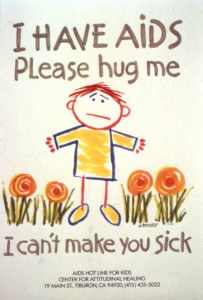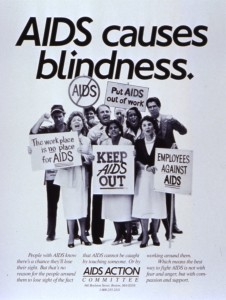 You may have already heard that the air inside our homes is more polluted than the air in most modern, industrial cities. As the winter months approach, and as we batten down the hatches to stay warm and cut down our heating bills, it is important to remember the potential hidden costs to our health. Contrary to popular wisdom, perhaps a drafty, energy-inefficient home is a worthwhile investment.
You may have already heard that the air inside our homes is more polluted than the air in most modern, industrial cities. As the winter months approach, and as we batten down the hatches to stay warm and cut down our heating bills, it is important to remember the potential hidden costs to our health. Contrary to popular wisdom, perhaps a drafty, energy-inefficient home is a worthwhile investment.
The problem in our homes is that there are multiple sources of gas and particle pollutants, and inadequate ventilation to reduce their impact.
Have you ever considered the byproducts of that gas flame on the stove, or the smoke from the wood burning in the fireplace, volatile gases from the glues in the subflooring, building materials, and pressed wood furniture, the carpet, the cabinetry, the products we use to clean our homes, the central heating and cooling systems, and the environmental levels of radon, pesticides, and exhaust from factories and automobiles?
Gases and particles of combustion so released can cause irritation of the respiratory system leading to symptoms like cough, burning eyes, and headaches. Some of the pollutants contribute to the risk of certain cancers. It is enough to make you want to live in a bubble in northern Canada.
The EPA website has an excellent resource to learn more about these sources of indoor pollution. I highly recommend reading through it, and also recommend voting against political candidates who would dismantle the EPA. Some of the major indoor air pollutants mentioned on the website include:
Radon – estimated to cause between 7,000 and 30,000 lung cancer deaths each year. Radon levels can be tested, and are generally considered acceptable if less that 4 pCi/L. The lower the level the better.
Tobacco smoke – bad. Don’t smoke. Enough said.
Biologicals – molds can thrive in moist walls, ceilings, carpets, furniture, poorly maintained humidifiers, dehumidifiers, and air conditioners. Household pet dander and dust mites cause allergic reactions.
Solutions may include venting kitchens, bathrooms, and dryers to the outside, cleaning humidifiers and emptying the water trays of air conditioners, dehumidifiers, and refrigerators, cleaning or removing water damaged carpets, and using basements as living quarters only if dry and with adequate ventilation and dehumidification to a 30-50% humidity level.
Carbon monoxide – this odorless gas can be released by gas water heaters, gas stoves, woodstoves, leaking chimneys, back-drafting from furnaces, fireplaces, car exhaust from a running engine in an attached garage, and smoking. At low levels it competes with oxygen’s binding to hemoglobin and can cause fatigue.
Those with heart disease and COPD are at even more at risk if oxygen levels drop. If CO levels reach higher concentrations the symptoms of poisoning (headaches, dizziness, confusion, and nausea) begin and may become fatal.
Adjusting appliances, installing an exhaust fan vented to the outdoors above gas stoves, making sure flues are open in fireplaces, choosing woodstoves that meet EPA emission standards and that have doors that fit tightly, professionally inspecting and tuning up central heating systems annually, installing monitors, and not idling the car inside can all help reduce CO risk.
Nitrogen dioxide – similar in source and remediation to carbon monoxide, usually unvented gas stoves and heaters, kerosene heaters, and smoking are the sources. May irritate the eyes, nose, throat and lungs.
Respirable particles – from fireplaces, woodstoves, kerosene heaters, and tobacco smoke, these particulates are another cause of respiratory, eye, nose, and throat problems and can lead to lung cancer. Proper venting, stove selection, and inspections as noted above can help, as well regularly changing filters on central heating and cooling systems.
Organic gases – emitted from paints, paint strippers, solvents, wood preservatives, aerosol sprays, cleansers and disinfectants, air fresheners, moth repellants, stored fuels and auto products, and dry cleaned clothing.
Organic gases may irritate the respiratory system, cause headaches, coordination problems, nausea, damage the liver, kidney and central nervous system, and may contribute to cancer risk. Steps to reduce exposure include using household products according to direction, providing fresh air when in use, and throwing away partially used containers.
The EPA website does not mention this but there are plenty of less toxic alternatives for cleaning including vinegar, borax, and baking soda. Many paints are available in low or zero VOC ratings, and perhaps going with a more wrinkled look at work will become acceptable one day.
Formaldehyde – this gas is emitted from pressed wood products such as hardwood plywood paneling, particleboard, and fiberboard, and furniture made with pressed wood. It is also released from urea-formaldehyde foam insulation, a type of insulation that is being used much less now. Formaldehyde irritates the lungs, eyes, nose and throat, can cause skin rashes, allergic reactions, and may even contribute towards a modest increase in cancers.
Try to purchase furniture with attention to the nature of the pressed wood (IKEA often uses little to no formaldehyde in their priducts), or spend an arm and a leg to get real wood, inquire about the nature of the wood used in new construction homes, use air conditioning and dehumidifiers, and maintain adequate ventilation.
There are other sources of indoor air pollution including pesticides, rodenticides, asbestos, and lead to name a few more, and more information on these can be found using the excellent link above.
I’m all for conservation of resources, and reducing energy consumption is absolutely a noble goal as our planet overheats from the effects of too many people. But my own plan selfishly includes having a bit of a drafty home this winter to improve air quality (as I wear a sweater and turn the thermostat down, though likely paying a higher electric bill anyway). We can’t avoid pollution, but perhaps an awareness of the common sources within the home will help.
If nothing else, perhaps efforts to remediate the sources may decrease our anxieties if not the medical symptoms caused!

 I’ve been feeling a bit more skeptical of the supposed benefits of “organic” foods lately. It’s hard to imagine any greater purity as I watch this fruit in a bowl on my kitchen counter top – a sad modern still life, festooned with brand name stickers. The high grocery bills I’ve been racking up combined with a few recent studies casting doubt over the differences between conventionally grown versus organically grown foods have given me pause.
I’ve been feeling a bit more skeptical of the supposed benefits of “organic” foods lately. It’s hard to imagine any greater purity as I watch this fruit in a bowl on my kitchen counter top – a sad modern still life, festooned with brand name stickers. The high grocery bills I’ve been racking up combined with a few recent studies casting doubt over the differences between conventionally grown versus organically grown foods have given me pause. 







